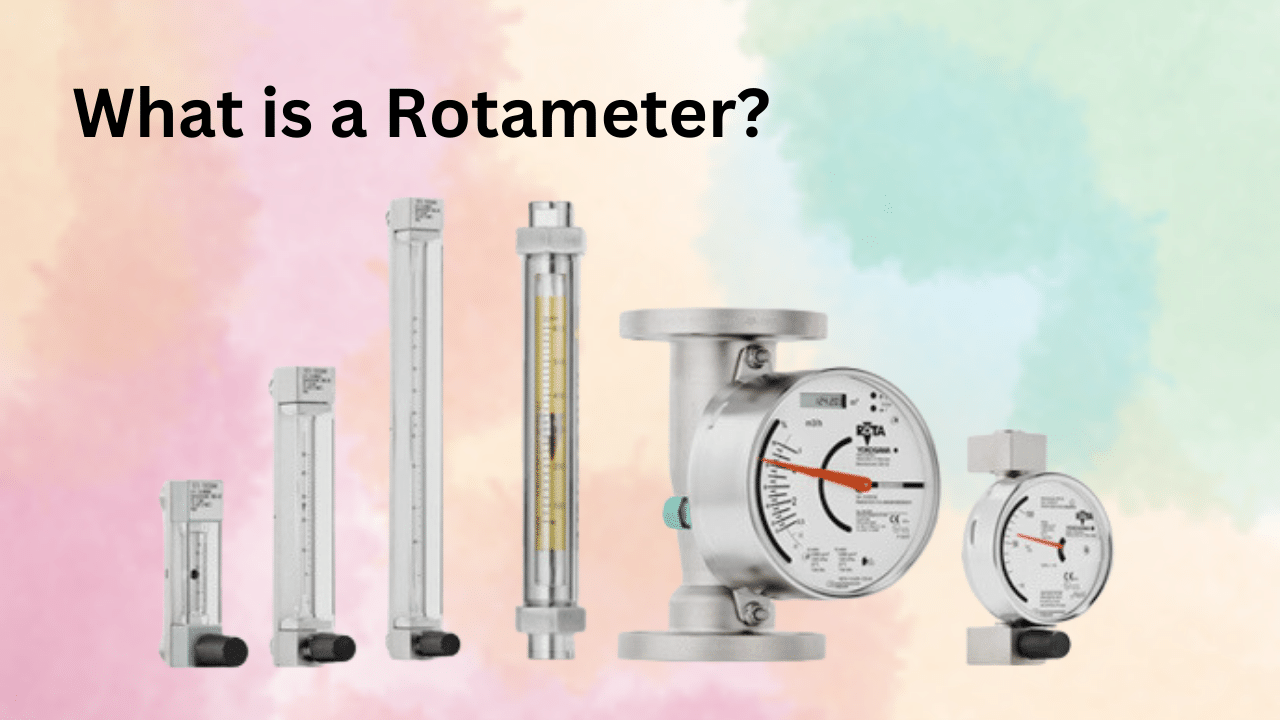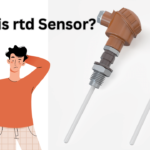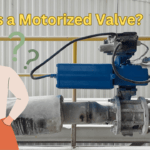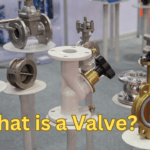Introduction
In the world of fluid mechanics, precision is key. Engineers and scientists often find themselves in situations where they need to measure the flow rate of gases or liquids accurately. This is where a Rotameter comes into play. In this comprehensive guide, we will delve into the intricacies of Rotameters, exploring their working principles, applications, advantages, and more. So, let’s start our journey into the world of Rotameters.
Rotameter History
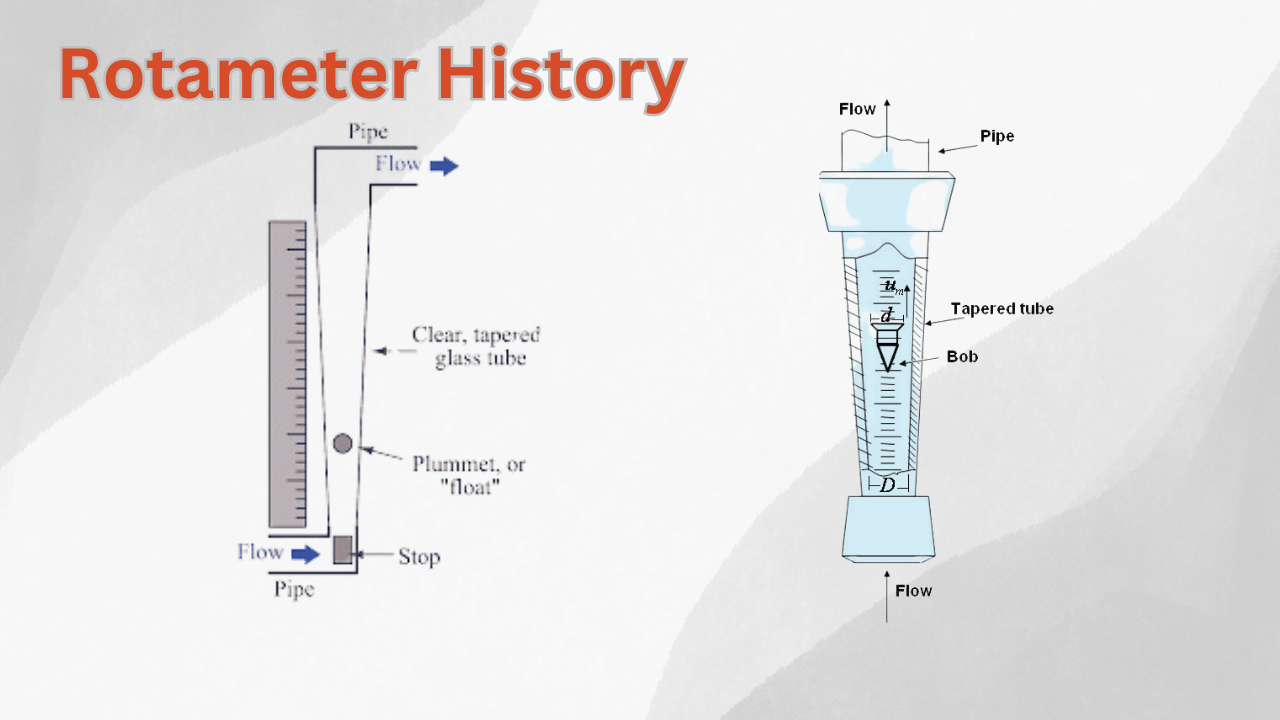
In 1908, Mr. Karl Kueppers, hailing from Aachen, made a significant invention: the world’s inaugural variable area meter featuring a rotating float. This pioneering creation was documented in German patent number 215225.
The term “Rotameter” was officially trademarked by the British company GEC Elliot Automation, known as Rotameter Co. Meanwhile, in numerous other countries, the “Rotameter” trademark has been claimed by Rota Yokogawa GmbH & Co. KG in Germany, a company currently under the ownership of Yokogawa Electric Corp.
What is a Rotameter?
A Rotameter, also known as a variable area flowmeter, is a device used to measure the flow rate of fluids in a closed system. Its ingenious design involves a tapered tube, typically made of glass or metal, with a float inside. As fluid flows through the tube, the float rises, and its position indicates the flow rate.
The Working Principle of Rotameters
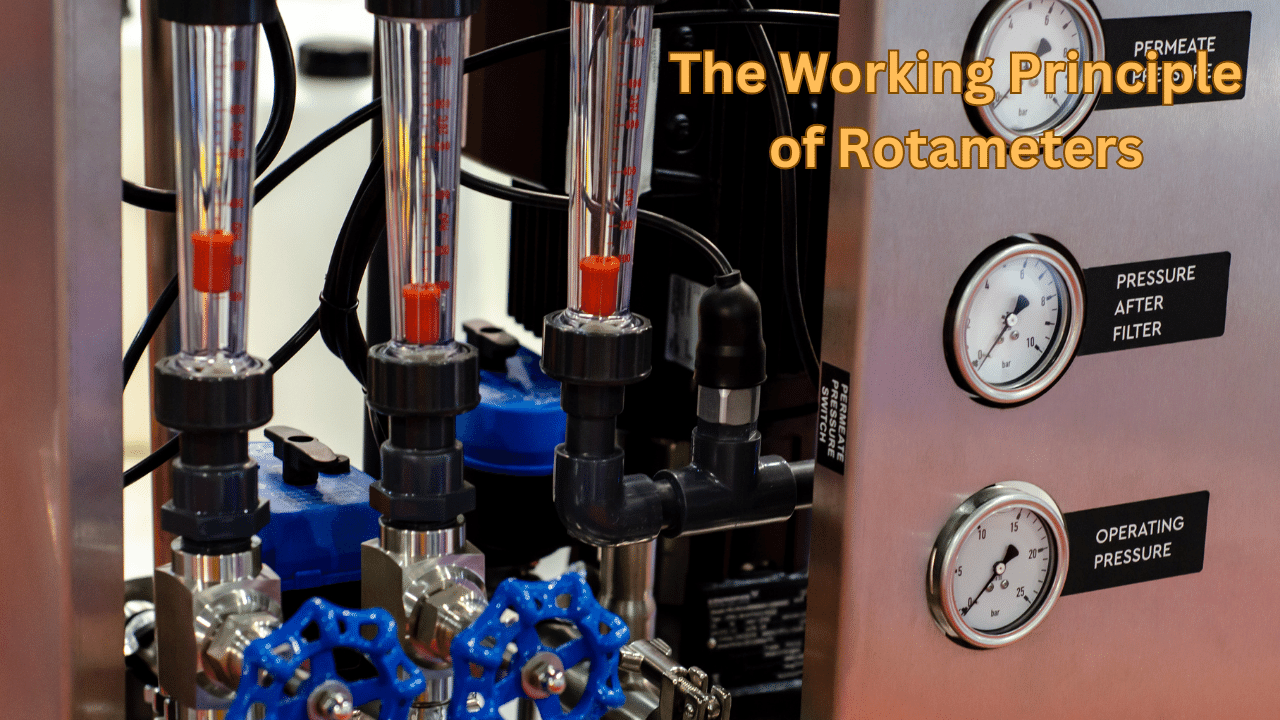
Rotameters operate based on the principle of variable area flow measurement. This principle involves the use of a tapered tube with a larger diameter at the bottom and a smaller diameter at the top. The fluid, whether it’s a gas or a liquid, enters the bottom of the tube and travels upward. As the fluid flows upward, it encounters a float, piston, or ball, which is free to move within the tube. The buoyant force exerted on the float or piston is directly proportional to the flow rate, and it acts in the opposite direction to the gravitational force.
The equilibrium point between these forces determines the position of the float or piston within the tube. When the flow rate increases, the float or piston rises to allow more area for the fluid to pass through. Conversely, when the flow rate decreases, the float or piston descends, reducing the flow area. The height of the float or piston inside the tube serves as a visual indicator of the flow rate. Typically, rotameters have a scale next to the tube, allowing operators to read the flow rate directly.
Applications of Rotameters
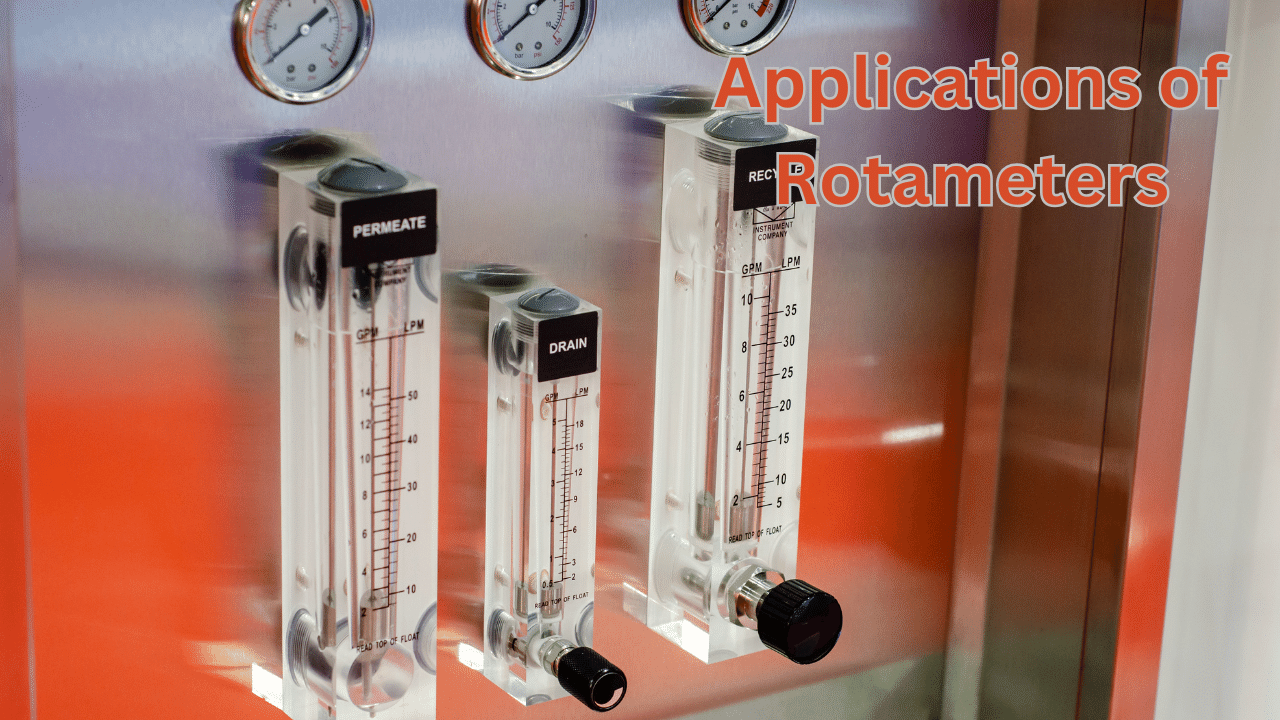
Rotameters are versatile instruments suitable for a wide range of applications across various industries. Here are some common applications where rotameters excel:
Chemical Industry: Rotameters are widely used to measure the flow of chemicals, including acids, bases, and solvents. They provide a cost-effective and reliable way to monitor fluid flow in chemical processes.
Pharmaceuticals: In pharmaceutical manufacturing, rotameters help control the flow of liquids and gases, ensuring precise dosing and mixing of ingredients for drug formulation.
Water Treatment: Rotameters are essential for measuring the flow of water and chemicals in water treatment plants, ensuring proper disinfection and filtration processes.
HVAC Systems: Heating, ventilation, and air conditioning (HVAC) systems utilize rotameters to measure and control the flow of gases, such as air and refrigerants, for efficient temperature regulation.
Laboratory Research: Rotameters find extensive use in laboratories for various experiments and analyses, where precise measurement of gas or liquid flow is crucial.
Food and Beverage Industry: Rotameters are employed in food and beverage processing to measure and regulate the flow of ingredients, such as liquids and gases, in production lines.
Petrochemical Industry: In the petrochemical sector, rotameters are used to monitor the flow of gases and liquids during refining and processing operations.
Advantages of Rotameters

Rotameters offer several advantages that make them a popular choice for flow measurement:
Simplicity: Rotameters have a straightforward design with no electrical components or moving parts, which makes them easy to install and maintain.
Visual Indication: The direct visual indication of flow rate on the scale allows for quick and intuitive reading by operators.
Wide Range: Rotameters are available in a wide range of sizes and materials, making them suitable for various flow rates and compatible with different fluids.
Minimal Pressure Drop: Rotameters introduce minimal pressure drop in the system, ensuring the fluid’s characteristics remain unaffected.
Cost-Effective: Rotameters are generally cost-effective compared to other flow measurement methods, making them an economical choice for many industries.
Reliability: Due to their simple design, rotameters are known for their reliability and durability, with a long service life when properly maintained.
Limitations and Considerations
While Rotameters are valuable tools, they do have limitations:
Not Suitable for Viscous Fluids: They are less accurate when measuring highly viscous fluids, as the float’s movement becomes sluggish.
Pressure and Temperature Sensitivity: Extreme variations in pressure and temperature can affect the accuracy of Rotameters.
Limited for Non-Vertical Installation: For optimal accuracy, Rotameters should be installed vertically.
Considerations for Proper Usage
While rotameters are versatile and reliable instruments, there are some considerations to keep in mind for their proper usage:
Fluid Compatibility: Ensure that the materials used in the rotameter are compatible with the fluid being measured to prevent corrosion or damage.
Installation: Proper installation, including mounting the rotameter vertically, is essential for accurate measurements. Any tilt or misalignment can affect the reading.
Calibration: Regular calibration and verification of rotameters are necessary to maintain accuracy over time. Calibration should be performed using reference standards or certified equipment.
Temperature and Pressure: Take into account the temperature and pressure conditions of the fluid being measured, as these factors can affect the accuracy of the rotameter.
Cleanliness: Keep the rotameter clean and free from debris or deposits that can obstruct the flow and affect the float’s movement.
Readability: Ensure that the rotameter scale is easily readable, especially in low-light conditions or when monitoring from a distance.
Conclusion
Rotameters are reliable and cost-effective instruments widely used for measuring the flow rate of gases and liquids in various industries. Their simple yet effective design, along with visual flow rate indication, makes them a preferred choice for many applications. By understanding the working principles, advantages, and considerations for proper usage, operators can make the most of rotameters in their processes, ensuring accurate and efficient flow measurement.
Frequently Asked Questions (FAQs)
Q1. Can I use a Rotameter for measuring gas flow?
A1. Yes, Rotameters are suitable for both gas and liquid flow measurements.
Q2. Are there digital Rotameters available for precise readings?
A2. Yes, modern Rotameters often come with digital displays for enhanced accuracy.
Q3. What is the typical accuracy of Rotameters?
A3. Rotameters offer accuracy within ±2% to ±5% of the full-scale reading, depending on the design and calibration.
Q4. Can Rotameters be used in hazardous environments?
A4. Rotameters can be designed to meet hazardous environment requirements, including explosion-proof enclosures.
Q5. Do Rotameters require regular maintenance?
A5. Rotameters have minimal moving parts and generally require minimal maintenance. However, periodic calibration and inspection are recommended to ensure accurate readings.
